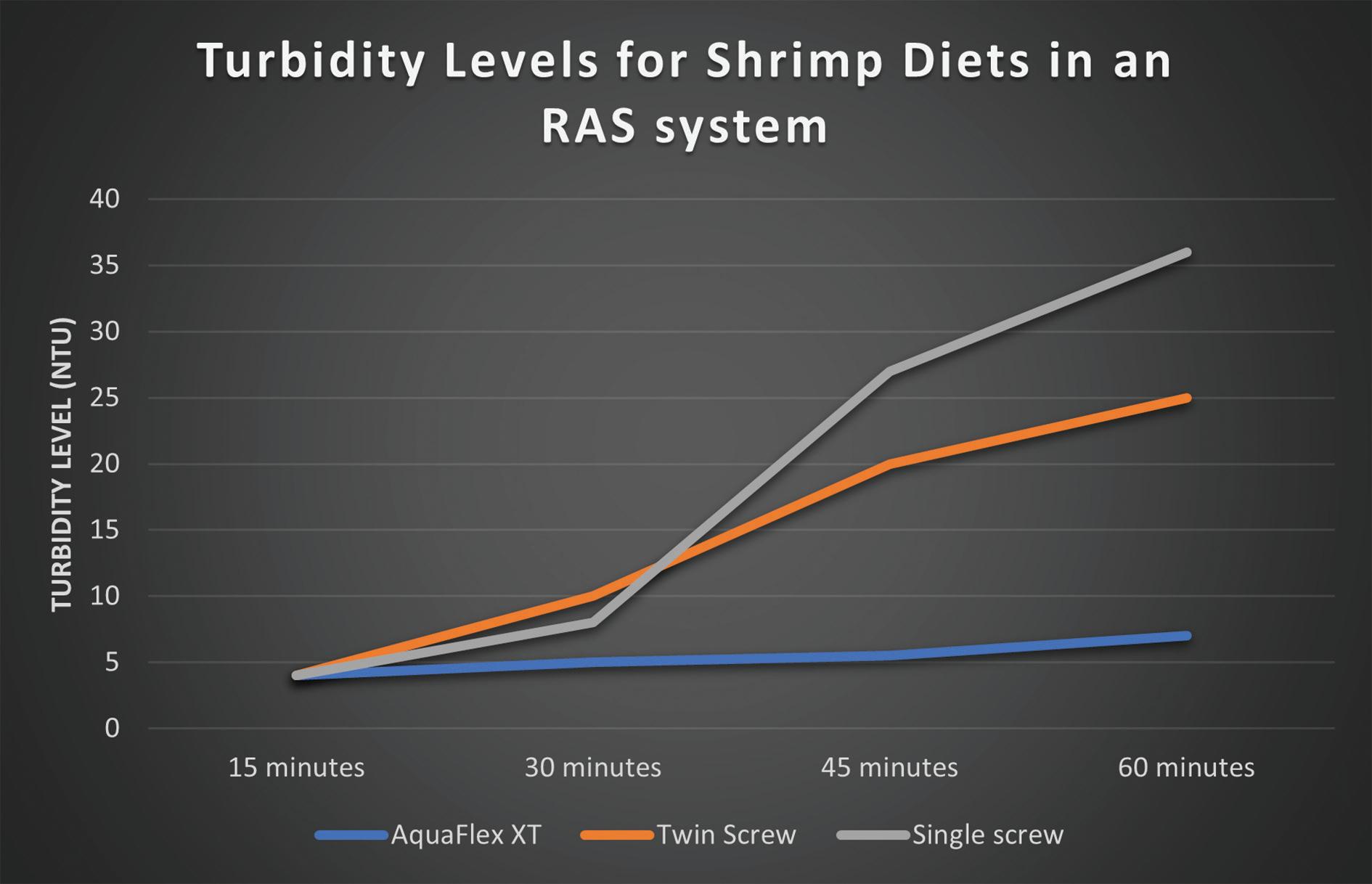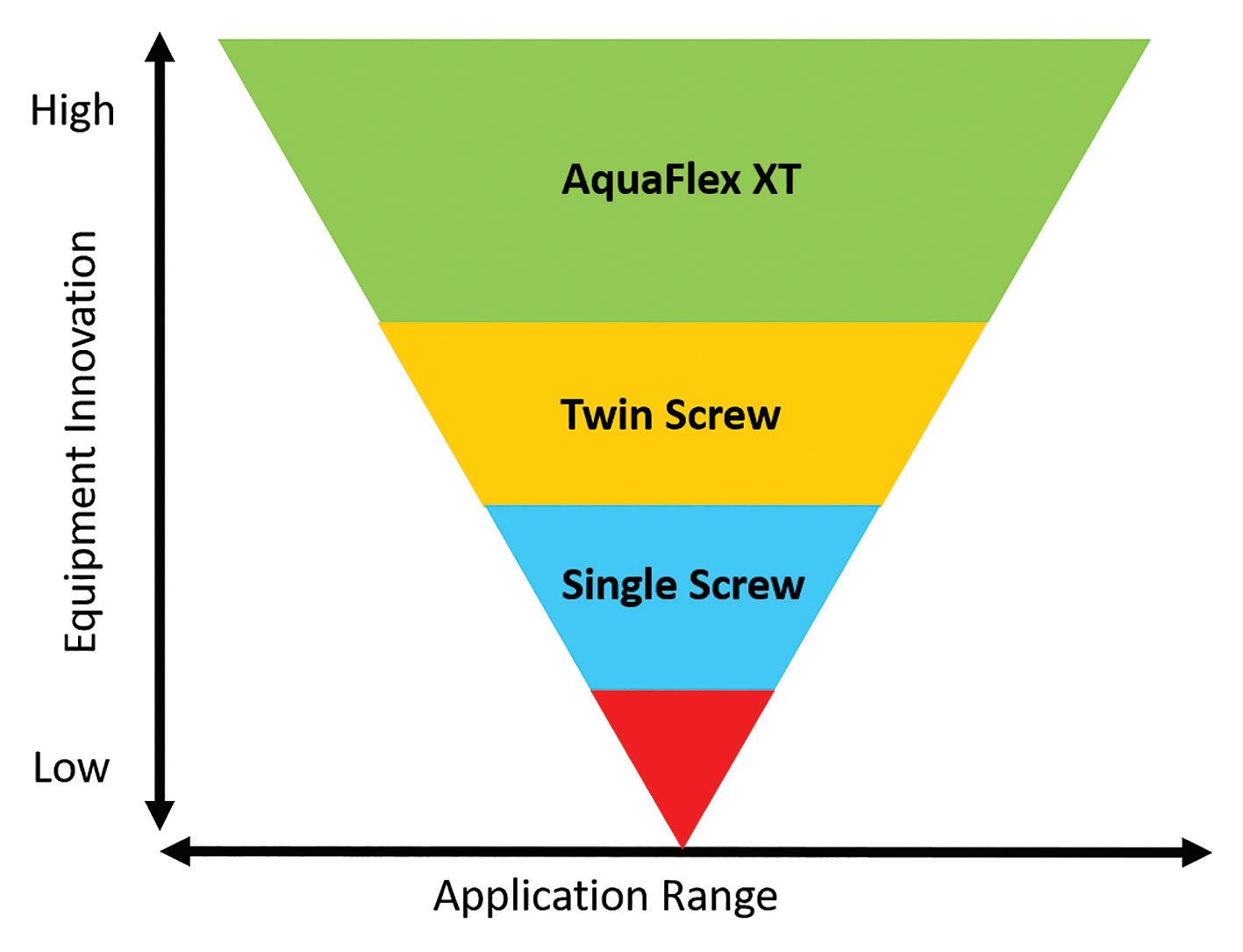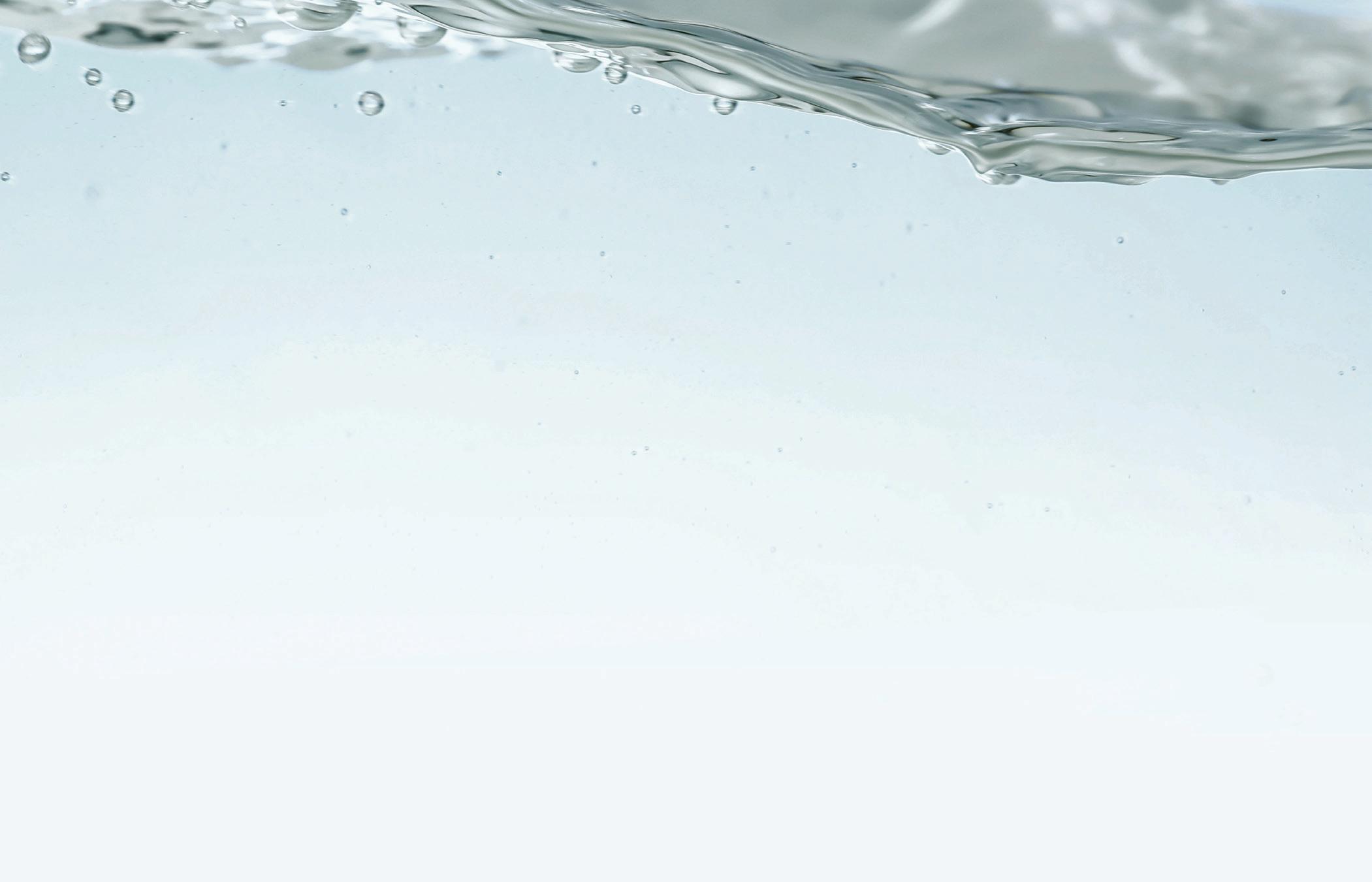
7 minute read
Extrusion solutions for RAS feed production
Jens Stengaard and Spencer Lawson, Wenger Manufacturing, Inc.
The population of the world is growing at a steady pace. The current population, according to the United Nations website, is roughly 7.6 billion people. By 2050, it is expected that the global population will approach 9.8 billion people. If the numbers are examined further, one could make the argument that the world’s population is experiencing a net increase of approximately 8,600 people per hour (+/- 208,000 per day). If someone were to ask, what does the entire population have in common? The most basic and simplistic answer would be … Everyone eats! Clearly, an individual’s diet is dependent on several factors. These factors could include but are not limited to,
geographic location and economics. In a hypothetical scenario, someone could say that due to the quality of life increasing in certain parts of the globe, people are desiring a higher quality protein. In many parts of the world, poultry, swine and beef are the top proteins of choice.
However, someone could make the argument that consuming fish is preferred over the previously mentioned protein sources and as aquaculture is predicted to supply the majority of aquatic dietary protein in 2050, it will be necessary for aquaculture to deliver a significantly enhanced volume of food in a sustainable manner.

Where the global wild fish catch has been more or less constant since the 1990s, the world’s demand for aquaculture (farmed fish) has kept on growing dramatically and with an estimated growth of additional two million tons per year approaching 2050, it will be necessary for the aquaculture industry to deliver this significantly enhanced volume of food in a sustainable manner. Also, special attention needs to be given to the impact on environmental integrity, farmed organism health, welfare and human health. Recirculation Aquaculture Systems (RAS) could in some degree be the answer to that.
Although the COVID-19 pandemic has put some planned RAS projects on hold, it will most likely be a temporary hold. The global demands for sustainable aquaculture food are fast-growing and therefore, the demands for RAS projects will surely be relaunched very soon and potentially with more projects to follow.
With the potential increase of RAS installations, the demands for feed will also increase. Global feed

Wenger® AquaFlex XT twin screw extruder with High Intensity Preconditioner (HIP), dual die assembly and overhead rail system. producers are already making plans on how to cope with this increasing demand in the future. Listening to RAS farmers, the importance of high-quality feed is essential for a beneficial business for RAS installation. Not only is nutrition quality of high importance, but also the physical quality of the feed. Some of the existing feed production lines may not meet the rigorous quality requirements RAS feeds demand. For this reason, it may be prudent to look for newer technology to produce feed.
Wenger® Manufacturing expanding its knowledge of RAS feeds
To expand Wenger®’s knowledge on the aquatic industry, specifically RAS, testing is being performed in Sabetha, KS, where the Wenger® corporate offices are located. The testing, that is currently underway, evaluates fish performance by compare different extrusion technologies (AquaFlex, single screw, and standard twin screw). In addition to fish performance, water turbidity levels are also being evaluated between the extrusion technologies mentioned above.
What are the requirements of RAS feeds?
RAS provides improved feed management opportunities and control over the environment of the farming operation. However, land-based fish farming represents a potential source of water pollution from feces and unconsumed feed. Premium quality feed can reduce the pollution potential and must have the following characteristics: • Highly digestible feed nutrients (requires optimized starch gelatinization to reduce feces volume). • The feed contributes to firm fish feces, which allows for easy removal from recirculated water. • High water-stability (less leaching of soluble and insoluble nutrients in this closed water system). • Feeds must be free from dust and fines, as this will create excessive load on the filter systems. • No fat leakage (vacuum infusion coating recommended) and minimal surface fat. • Consistent and uniform feeds from batch to batch.
Pellet structure from AquaFlex XT.

Pellet structure for single screw.

• Optimum customized densities ensuring correct sinking rates. • Pasteurized feed to prevent disease transmission and process controls to assure feeds meet minimum process conditions for safe feed.
What would a system producing RAS feeds look like?
Traditional twin-screw extrusion design has served its purpose as the aquafeed industry developed. Yet the industry now stands at a tipping point where new trends, such as recirculation aquaculture system is demanding higher product qualities and pushing the traditional systems beyond their limit.
Flexibility is key and what the new generation Wenger® twin screw extrusion systems are built on. The AquaFlex XT twin screw extrusion system is tailored for aquatic feed manufacturers to maximize their investment by providing them the capability to manufacture a wide range of products such as floating, sinking, shrimp and micro feeds in different product sizes while utilizing a broad ingredient and recipe selection. This flexibility is possible given these systems are engineered with a specialized screw profile design to deliver higher volumetric capacity and the capability to operate using a wide range of thermal and mechanical energy cooking conditions.
Using feed manufactured with enhanced quality will ensure a low turbidity level (clear water) improving the entire performance and productivity in a recirculating aquaculture system.
Thermal and mechanical energy are the main energy sources utilized in the extrusion process. A review of current extrusion processes in the industry indicates the ratio of consumed thermal to mechanical energy ranges from 1:1 to 2:1. This ratio determines utility costs as well as maintenance costs, specifically the costs to replace worn rotating elements. A recent study compared energy input and operating costs for three extrusion systems. It was observed that even though the total energy input (thermal + mechanical) was higher for an AquaFlex XT twin screw extrusion system, it was less expensive to operate over time compared to a standard single screw and twin-screw extrusion system.
An extrusion system with the ability to vary this energy utilization ratio and shift to the most favorable energy sources from a cost standpoint brings increased flexibility to the cost of operating the system. Wenger® AquaFlex XT twin screw extruder system is engineered with the flexibility of operating in higher thermal to mechanical energy ratios. This is achieved by using a twin-screw profile giving more volumetric capacity, compared to traditional twin screw extruders. The special screw profile makes it possible to add more steam injection and thereby adding more thermal energy extruder barrel. The higher flexibility within the thermal/mechanical energy ratio, the better the raw materials being used in the formulation can be better utilized. Additionally, the system is coupled with a high intensity preconditioner (HIP) which provides less product moisture variation and increases greater distributive mixing resulting in increased and uniform starch gelatinization compared to other steam conditioning designs.
As a result of a wider energy utilization ratio and a specialized twin screw profile, coupled with a preconditioner that delivers less product moisture variation and increased cook, the flexibility of the AquaFlex XT twin screw extrusion system becomes key to increase product offerings and differentiation.
Thermal energy is considered a more natural way of cook when compared to mechanical energy. This translates to less shear and more gentle kneading to continuously develop the visco-elastic dough product matrix and an improved cell structure of the extruded pellet.
With an AquaFlex XT twin screw extrusion system, aquafeed manufactures can expand their offering to shrimp, floating, micro, sinking, fish soluble inclusion feed and RAS-specific feed, all made on the same production line.
In two separate case studies in India and Vietnam using an AquaFlex XT twin screw extrusion system, a 10% formula cost reduction was observed producing shrimp feed and tilapia feed without compromising product integrity. Pellet durability indices above 99% were recorded in both studies, where product size ranged from 0.6 mm up to 2.2 mm in shrimp feed and 1.8 mm up to 7.0 mm in tilapia feed.
The AquaFlex XT twin screw extrusion system has been engineered to provide the aquafeed manufactures a precise tool giving full production flexibility with optimized operation cost. The AquaFlex XT twin screw extrusion system simply outperforms single and traditional twin screw extrusion systems.
More information: Jens Stengaard
Global RAS Sales Manager Wenger Manufacturing, Inc., USA
Spencer Lawson
RAS Process Director Wenger Manufacturing, Inc., USA E: aquafeed@wenger.com
CLEAN FEED. CLEAN WATER.
Wenger innovative extrusion solutions deliver clean, durable, nutritional feeds specifi cally designed for the most e cient RAS operations. Feeds produced on Wenger systems maintain their integrity better and longer, for clean and clear water. So you feed the fi sh, not the fi lter.

Learn more about the Wenger RAS advantage. Email us at aquafeed@wenger.com today.
PHONE: 785.284.2133 |
EMAIL: AQUAFEED@WENGER.COM | WENGER.COM USA | BELGIUM | TAIWAN | BRASIL | CHINA



